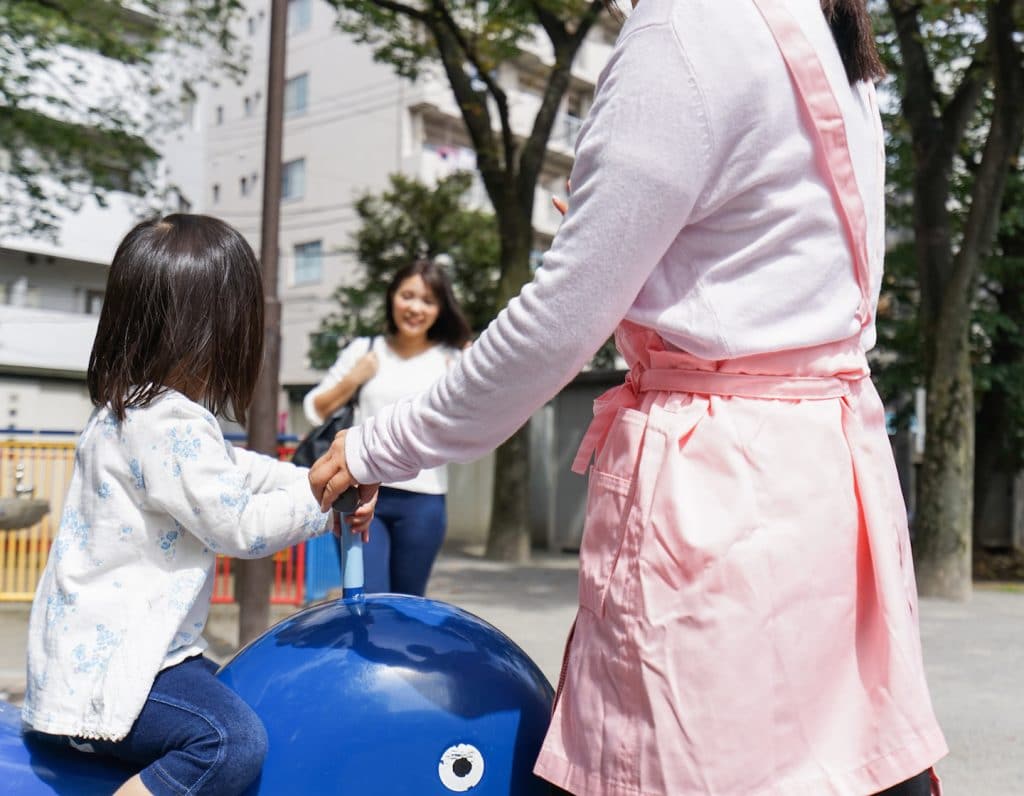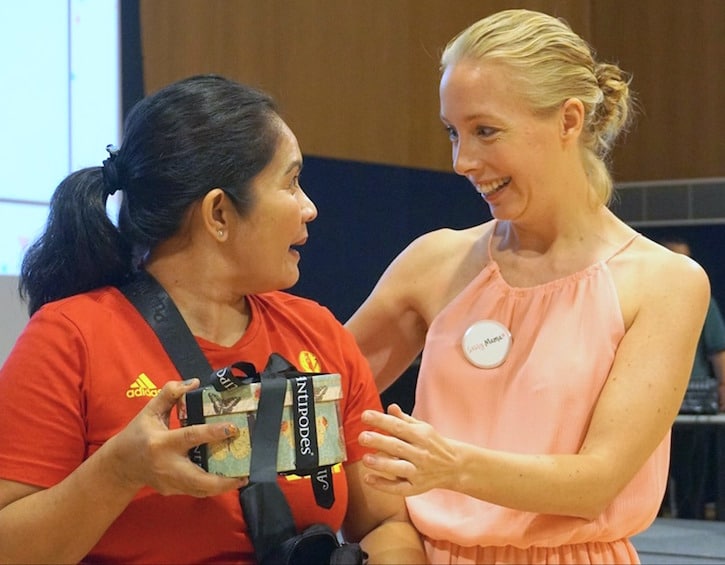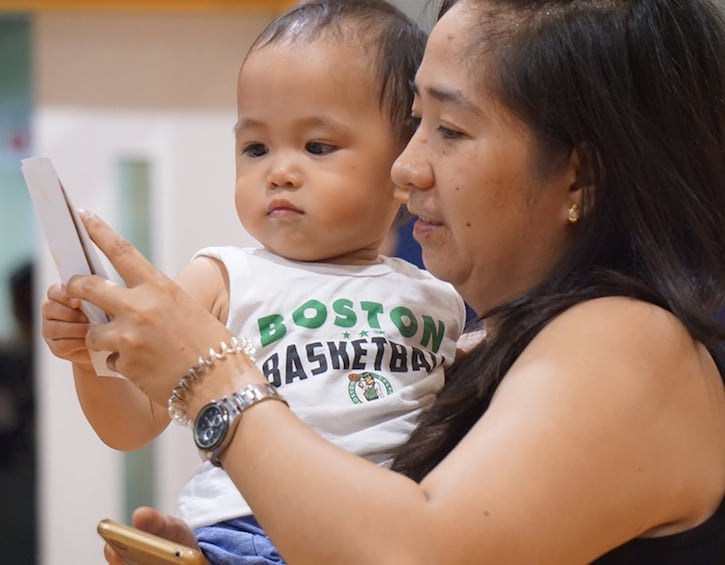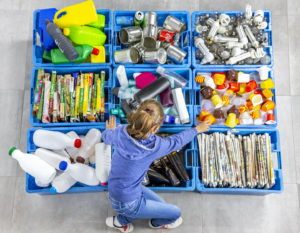
 Post Category - ParentingParenting - Post Category - Toddler & PreschoolerToddler & Preschooler
Post Category - ParentingParenting - Post Category - Toddler & PreschoolerToddler & PreschoolerA parenting expert on how to help your child say goodbye to a helper who is leaving, and adjust to your new helper
Our helpers spend a great deal of time with our little ones so it’s important to ensure that they develop a trusting relationship. As a mum who’s had the privilege of having the support of a helper, I also understand the struggle that can happen when introducing a new helper to the family. Here are 3 of my top tips that I carry around in my back pocket every time a friend mentions they’re having baby-helper relationship anxiety, plus a quick word on how to help your child say goodbye to your current helper.

1. Show your child that you trust your helper
Our children often take social cues from us, so when we are comfortable and friendly with our friends, they tend to warm to them, too. Similarly, when our children notice that we are comfortable and at ease with this new helper in our space, they are more likely to be open to developing a relationship with them. I remember my son before his first birthday; he would be so wary of strangers in his environment that sometimes he would start crying if any one of them were to approach him. Though seemingly inconsolable, bringing him close to me and gently telling him, “these are mummy’s friends. I trust them” would help calm him down.
Read more: Top 10 Tips for Managing Your New Helper in Singapore
If you’re facing a similar situation at home, don’t force your child to like or have to hang out with your new helper if they don’t feel comfortable. Instead, show your child how the new helper is now a part of our household by working together with her in the home environment. Even having a casual conversation or preparing your dinner together will help your child let their guard down especially when they start seeing this new helper as part of the normal routine. When your child sees that you trust your helper to prepare meals be involved in the family, it sends positive signals that this new person can be a good caregiver.

2. Facilitate play between your child and your helper
Play is a great time to help your child feel more comfortable with your new helper. When children are playing, they are in good spirits and their guard lowers. This gives your new helper a chance to bond with your child. It helps to prepare your helper beforehand, letting her know which toys are your child’s favourite, what kind of themes they might be interested in, and activities they enjoy doing. Not only does this help build her understanding of your child, but it helps prevent her from ‘making a wrong move’ which may cause your child’s guard to rise again. A good tip is to also always ask before joining in their play time as well. A simple, “It looks like you’re having fun. May I join you?” can make all the difference to whether a play session goes well or awry.
Children are also very keenly aware when people are genuine. In this case, it helps to give your helper some alone time to figure her way around engaging your child so that it is natural and genuine. If you start noticing she is having difficulty, then do step in to correct and advise her on what she can do differently.
Another option would be to invite your helper to join in on your play time. “This is a fun game. I think auntie would like to join in too. Can I invite her?” allows you to both check in with your child’s feelings but also show that you have an inclusive attitude towards your new helper as well. Being the ‘middlewoman’ in this case also lets your helper observe how you interact with your child so she can also take cues from you.
Read more: 7 Tips to Empower Your Domestic Helper in Singapore
3. Give them both time
Every child and helper dynamic is different. We’ve heard stories of children who take to new helpers almost instantly, whilst others just don’t seem to have the chemistry. As with any new relationship, the trust the child has towards the helper needs time to develop. Through proving that they can be good caregivers from performing day-to-day tasks such as diaper changes, meals and baths, to connecting with the child on a deeper level through play and story time, the bond should build over time.
Children need consistent and stable caregivers in their lives in order to build trust with them. Drawing a leaf from Eric Erickson’s psychosocial theory, since young children are so dependent on their caregivers for survival, it is crucial for caregivers to respond to the child’s needs, both physical and emotional. Things such as offering a cuddle when they get frightened or making sure to cook the foods they like, are important in letting the child know that this new helper is a trustworthy caregiver.
As always, it does take time for the child to establish that this new helper is capable of responding appropriately to their needs, so it’s normal to have to give both parties time to get used to each other.

Saying goodbye to a helper
It’s hard to say bye to someone who’s been a part of the family. I personally can’t imagine the day we will have to part with our helper who has been with us since my son was born. You can expect that it might be even more difficult for your child. It’s important to give your child ample time to say their goodbyes.
I like to suggest what I call a ‘farewell tour’ through a series of meaningful engagements with your helper before she eventually has to leave the family. Some suggestions for a meaningful farewell include a day out to your child’s favourite place together, taking a souvenir photo together and getting it framed. One for your child, one for your helper – a reminder to your child that they won’t be forgotten. Another could be to work with your child to create a book of memories for your helper which could include photos and drawings. Of course, plenty of shared meals are a great idea, too. Some children do feel anxiety and may fall sick as a result of this stressor. A great deal of patience and love goes a long way. Also, reminding them of why your helper is leaving e.g she’s going home to her family, can help alleviate any feelings of abandonment.
A quick last word
Always trust your gut! If you feel your helper is really not a good fit for your family, then do take the necessary steps to do a transfer and hire a better fit for the family.
Read more: Do You Know What Your Helper Does on Her Day Off?






 View All
View All




 View All
View All









 View All
View All






